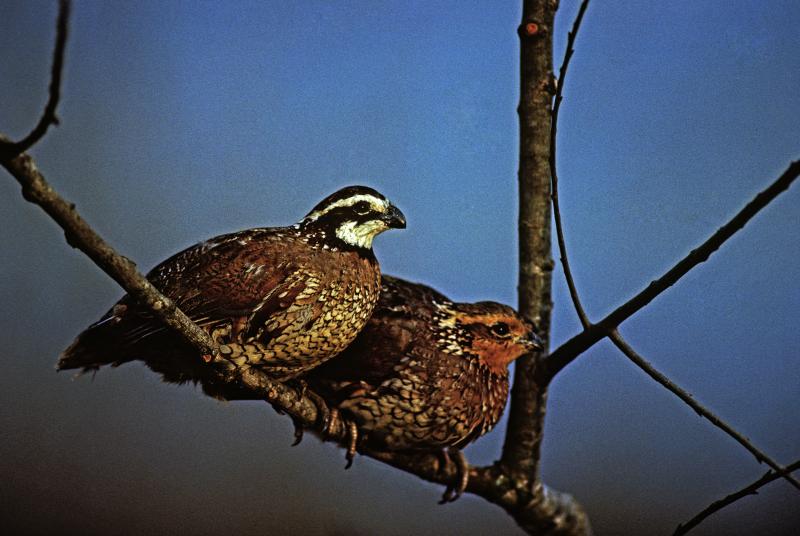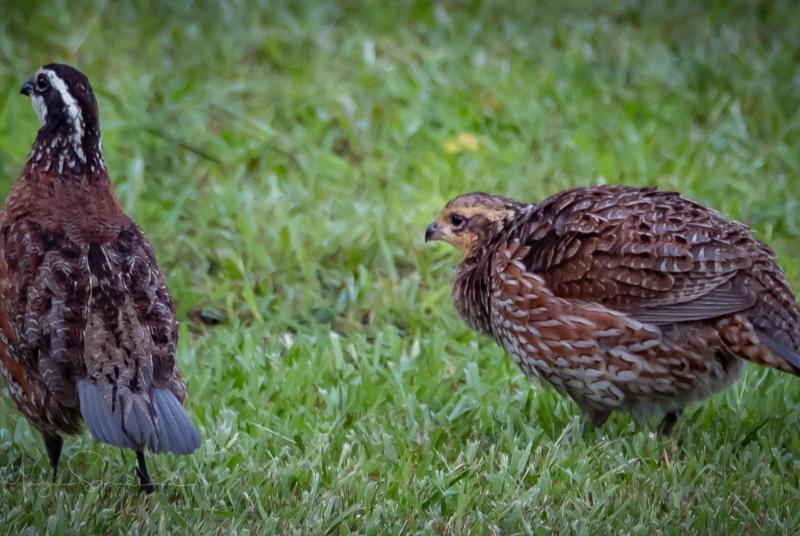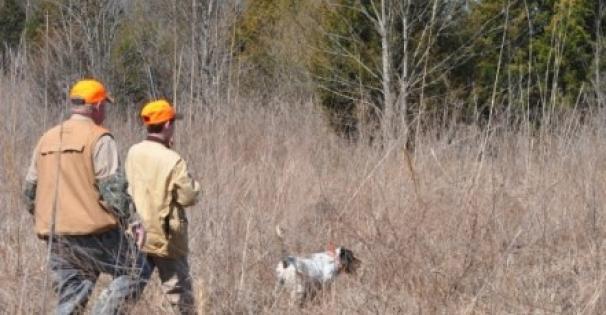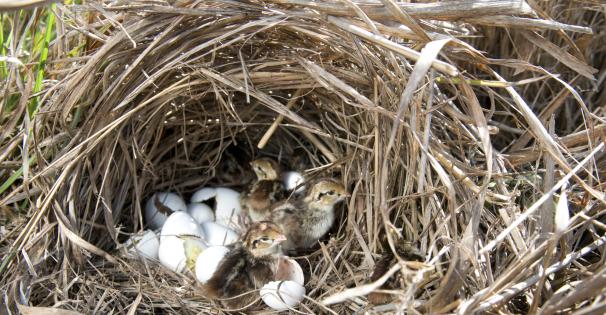Some landowners attempt to use pen-raised birds to rebuild a wild population. However, research indicates that releasing pen-raised quail is not a viable solution to restoring wild quail populations. Research has found chicks learn behaviors from wild-quail parents that increase chances of survival. Therefore, typical pen-raised quail generally behave differently than wild birds. Many strains of quail raised in captivity have also been selected for meat production traits that may not be optimal for survival in the wild. Most often wild birds are absent because there is a habitat deficiency. If habitat cannot support wild birds, there is little reason to believe it would support pen-raised birds. If your land management goal is increasing wild quail populations, the resources that would be invested in releasing pen-raised quail would be better spent on habitat management (realizing that some areas have a higher probability of success than others).
The effects that releasing large numbers of pen-reared birds might have on wild quail populations (mainly from a population genetics and fitness standpoint) are not fully understood. For example, how the crossing of wild and captive strains might affect subsequent generations' survival abilities is unknown. Although survival of pen-raised quail after release is very low, some do survive and reproduce with wild birds (this has been verified in several studies). Perhaps there are no adverse effects, but genetic differences have been detected in pen-raised and wild birds (and subsequent offspring produced by interbreeding of pen-raised and wild birds). Finally, there is always the possibility that releasing birds raised in captivity may introduce diseases and parasites into wild populations of quail, turkeys, and other birds. When using pen-raised quail, every effort to minimize disease problems should be taken when releasing pen-raised quail (primarily obtaining birds from a facility that practices disease prevention and good sanitation).
Using pen-raised quail to train dogs, supplement wild populations subjected to intensive harvest, or practice put-and-take hunting are more valid uses of pen-raised birds. However, anyone considering use of pen-raised quail should follow the general guidelines in this document for implementing a release program legally and to reduce potential negative effects on wild bird populations.
Legal Requirements
Shooting Preserves and Dog Training with Pen-raised Quail
Pen-raised quail may be released and hunted on private land during the statewide quail season. However, state bag limits must be observed, and a hunting license is required. To harvest more released birds than bag limits dictate or to hunt released birds outside of the statewide quail hunting season, a shooting preserve license or dog training permit is required. However, shooting preserves must meet and follow some specific requirements (for example, shooting preserves must contain a minimum of 100 acres in one tract of leased or owned land and are restricted to not more than 640 acres). Refer to Permits and Applications and look under the Wildlife & Hunting Applications section to obtain these permits (they will be listed within the Special Permits tab of Licensing System page when selecting the link to the permit).
Raising Quail
A commercial quail breeder's license issued by the Commission on Wildlife, Fisheries, and Parks is required of anyone raising quail for sale. A commercial quail breeder's license is not required for persons that raise no more than 100 quail per year for personal consumption. Anyone that raises quail for use on their own shooting preserves must purchase a breeder's license in addition to the shooting preserve license. Refer to the Raising Quail for Commercial or Personal Use section of this website for more information.
Suggested Guidelines for Releasing Pen-raised Quail for Hunting
Release Methods
Once you determine if releasing pen-raised quail is right for your given hunting objectives and have secured any necessary permits, there are some general procedures you should consider for the release operation. Place metal leg bands on all pen-raised quail over 4 weeks of age that are being released. Although marking released quail is not required, except for the requirements established for use with dog training permits, banding will help differentiate pen-raised birds from wild birds. Remember: wild birds cannot be legally taken outside of the state quail season. Contact a commercial supplier of tags and bands for more information on sizes and types available. Local farm supply stores may be able to obtain bands or tags. An internet search can quickly yield sources.
For preseason releases a month or two before the hunting season, release 1 to 2 birds per acre of suitable habitat (grassland, open woodland, and shrubby cover). Birds should be released in coveys of about 20 birds and distributed around the area in suitable cover. The best time of year to release birds is September to November.
Traditional release methods involve bringing coveys of pen-raised birds to release sites in boxes in the early morning and opening the boxes to allow birds to exit on their own. Release boxes should be picked up the afternoon of or the day following release. Minimize disturbing released birds as much as possible during the first few days after release. Releasing additional birds may be needed periodically to maintain covey finds in intensive commercial hunting operations. Some operations practice "day of the hunt" releases, in which birds are released just before or on the day of a scheduled hunt.
Several commercial gamebird release units are also available. Some of these commercial units are brooder-type systems in which chicks are raised for several weeks prior to release. Others are sheltered feeder systems designed to hold released birds close to the release site. The manufacturers of some of these units may claim that these units will restore wild quail populations on a given property. These units may increase early-season survival and produce birds that behave more like wild birds and have good flight characteristics, but do not assume that these units will restore self-sustaining, wild populations any more effectively than traditional releases.
These units may indeed provide a huntable quail population during the year of release, but new birds will likely have to be supplied each year to maintain huntable numbers. If wild quail populations are low in or absent from a given area, it is likely that the necessary habitat components required by quail are deficient either in quality and/or quantity. This being said, it is perfectly acceptable to use these units for your release operation if you are willing to purchase them. They may indeed produce superior hunting experiences compared to traditional releases, but do not rely on these units to restore self-sustaining, wild populations in the absence of comprehensive habitat management.
Whatever release method is used, birds should be released into areas of good concealing cover, such as standing broomsedge fields, woodlands with suitable, concealing ground cover, and shrub thickets (such as plum, blackberry, or sumac). Food should be provided for 3 to 5 weeks after release. Broadcast untreated milo or other sorghum grain into cover near release sites once a week. Cracked corn might also be used. Be sure that you do not put yourself or clients in a position where wild game hunting over bait could be an issue. Water may also be provided during the feeding period with a poultry watering system or simply in a shallow bowl.
Purchasing Pen-raised Gamebirds
Perhaps the easiest way to locate sources of pen-raised gamebirds (quail, pheasants, etc.) in your area is to inquire with others who have purchased birds for release. The North American Gamebird Association may also be able to provide contact information for gamebird breeders in your area.
Persons with prior experience obtaining birds may be able to provide some insight on quality of birds produced by gamebird sellers. No bird breeding operation is without some disease problems, but look for reputable gamebird breeders that practice strict disease prevention methods. Disease prevention methods include frequent cleaning and sanitizing of the breeding facility and proper vaccination (vaccines are typically applied with feed) of birds. This should at least minimize potential disease problems. Some breeders may raise quail primarily for meat production, while others may raise "flight-conditioned" birds for hunting. You might ask the breeder if they can provide references. Customers that have done business with the breeder before might be able to provide more information on characteristics of their birds.





